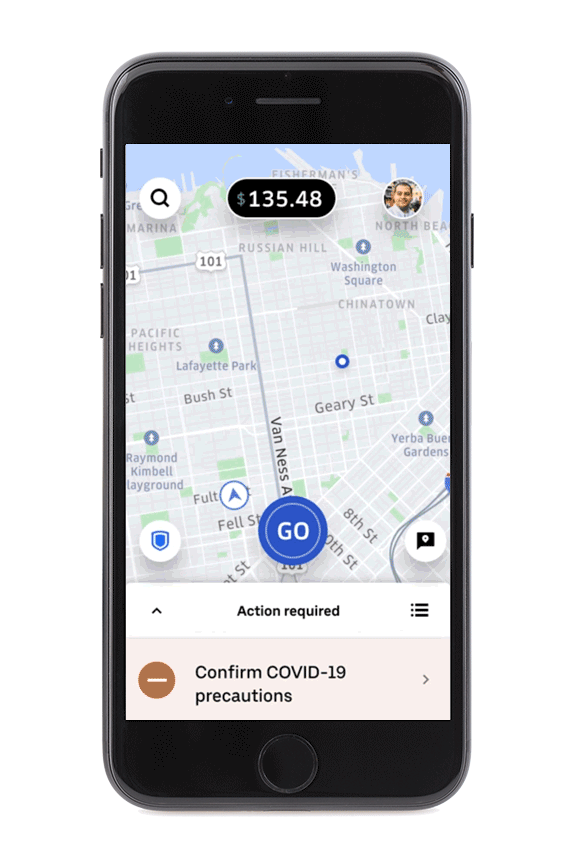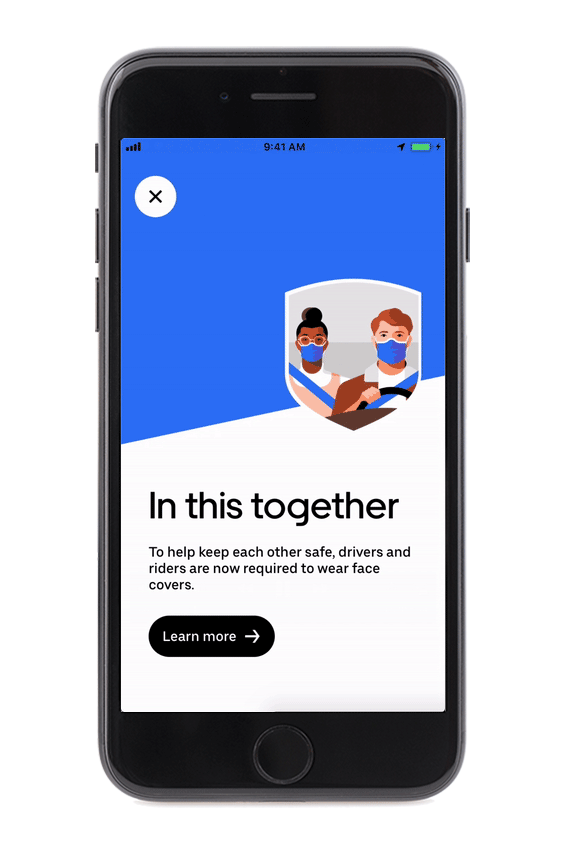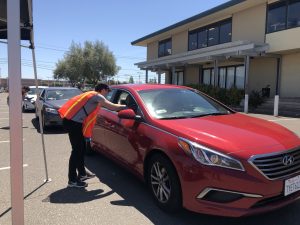Your Second First Trip
Written byFor more than two months, Uber has been urging riders to stay home, for their safety and the safety of drivers who continue to make essential trips.
Now, as cities begin to reopen and people start moving again, Uber is proceeding with caution and safety top of mind. We will all have a role to play to help each other stay healthy when traveling.
It’s important to us that you know what to expect when you take that “second first trip.” Over the last two months, our tech and safety teams have been hard at work building a new product experience that will help protect everyone, every time they use Uber.
Go Online Checklist and Mask Verification
Before a driver or delivery person can go online, they will be asked to confirm, via a new Go Online Checklist, that they’ve taken certain safety measures and are wearing a mask or face cover.
Our new technology will verify if the driver is wearing a mask by asking them to take a selfie. After we verify the driver is covering their face, we’ll let the rider know  via an in-app message. (Unlike our Real-Time ID Check system, this technology detects the mask as an object in the photo, and does not process biometric information or compare mask selfies to driver photos in our database.)
via an in-app message. (Unlike our Real-Time ID Check system, this technology detects the mask as an object in the photo, and does not process biometric information or compare mask selfies to driver photos in our database.)
In the United States, Canada, India and most of Europe and Latin America, drivers who are not wearing a mask or face cover will not be able to go online beginning next Monday, May 18. We will maintain this policy indefinitely and reassess based on local public health needs. We’ve designed this feature to adapt to changing public health guidance and regulations as the pandemic evolves.
We’ve also built a similar checklist for riders. Before every trip, riders must confirm that they’ve taken precautions like wearing a face cover and washing or sanitizing their hands. They must also agree to sit in the back seat and open windows for ventilation. We’re also reducing the maximum suggested number of passengers for an UberX ride to 3 from 4.
Accountability and Enforcement
Accountability is key—and it goes both ways. That’s why we are encouraging drivers to cancel trips without penalty if they don’t feel safe, including if the rider isn’t wearing a face cover. It’s important to note that Uber’s Community Guidelines  prohibit discrimination against anyone based on their race, national origin or gender.
prohibit discrimination against anyone based on their race, national origin or gender.
If a driver shows up without a mask on, the rider can cancel the trip without penalty, too, and report the issue to us via the app. Uber’s two-way feedback system has long helped ensure both riders and drivers uphold certain standards by requiring feedback on issues like vehicle quality, navigation, and speeding. Now, we are adding new options for feedback including having no face cover or mask. Drivers and riders who repeatedly violate mask policies risk losing access to Uber.
Supplies for Riders, Drivers, and Delivery People
As we all begin to move around in this “new normal,” access to cleaning materials and protective equipment is critical. That’s why we’ve allocated $50 million to purchase supplies like masks, disinfectant sprays and wipes, hand sanitizer, and gloves. As of this week, we have secured more than 23 million masks for drivers and delivery people around the world.
Many of these items were shipped directly to driver’s homes. In some countries where shipping is less accessible, we’ve provided reimbursements for cleaningsupplies and protective equipment. We’ve also begun to hand out supplies in person at some of our Greenlight Hub locations globally.

Moving forward, we’ll continue to source and ship supplies to drivers and delivery people, doing our part to help make sure vehicles are cleaned regularly and riders have access to sanitizing supplies in the car.
We’re also piloting new partnerships with world-class leaders in cleanliness. Working with Clorox in select cities in North America, we plan to distribute ridesharing-specific disinfecting tips and work to make more supplies available to drivers and riders in the car.
We’ll also team up with Unilever in the UK to provide hygiene kits for drivers and delivery people, with plans to expand to more countries across Europe and Africa soon.
Safety Education from Experts
Working with the US Centers for Disease Control and Prevention (CDC) and the World Health Organization (WHO), we have compiled safety tips and recommendations specifically geared toward ridesharing and food delivery.
We’ve already begun sharing this information with users globally and we’ll now leverage the tips to educate riders, drivers, delivery people, and restaurants when we learn of unsafe behavior. We’ve also included this information in COVID-19 safety educational videos.
During the first phase of the crisis, it’s been heartening to see our communities come together with a collective sense of responsibility. As we move into the new normal, it’s our goal to encourage this same sense of shared responsibility: Uber, riders, drivers, delivery people and restaurants—we all have a role to play in keeping each other safe and healthy.